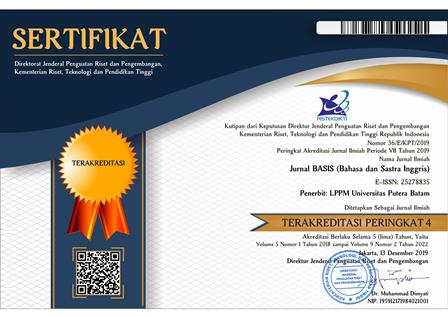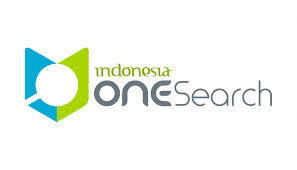LEARNING EXPERIENCES USING BLENDED LEARNING ON EFL LEARNERS AT SULAWESI BARAT UNIVERSITY
DOI:
https://doi.org/10.33884/basisupb.v7i1.1787Keywords:
Learning Experiences, Blended Learning, EFL LearnersAbstract
Blended learning is a mixed learning model between conventional learning or commonly called face-to-face and e-learning. This learning model utilizes an internet connection to do one of its components, namely online learning that utilizes certain applications. Based on that, the problems examined in this study are: (1) How did students feel about their blended learning experience, (2) What difficulties/challenges did students experience during their blended learning experience? This study aims to determine learning experiences and difficulties/challenges using blended learning models in EFL learners at the University of Sulawesi Barat and the type of ethnographic research that focuses on case studies. This study focuses on case studies in order to investigate deep phenomena regarding a case. Data are described descriptively. The subjects in this study are students or learners of English as a foreign language (EFL) at the University of Sulawesi Barat. Data collection methods are observation, interviews, and questionnaires addressed to EFL students. The validity of the data technique is the technique of triangulation. The result of this study represents 5 learning experiences that faced by all subjects. There were blended learning method made them more excited because can done everywhere, less embarrassing felt, flexible, motivate to active in learning, simplify and speed up the process of nonstop communication. Furthermore, difficulties/challenges faced by all subjects using the method was network connection an Four varying categories emerged and these included: managing time, technical issues, novelty of the learning experience, and learning style.
References
Hamid, A. A. (2001). e-Learning: Is it the “e” or the learning that matters? The Internet and Higher Education, 4(3–4), 311–316. https://doi.org/10.1016/S1096-7516(01)00072-0
Jefferies, Amanda Lucille Joanne. (2010) Blended Learning: Undergraduate Students’ Experiences Of Using Technology To Support Their Learning. Thesis. United Kingdom: University of Hertfordshire.
Ko, Susan and Rossen, Steve. (2004). Teaching Online a Practical Guide, Second Edition, New York: Houghton Mifflin Compeny.
Krasnova, Tatiana and Sidorenka, Tatiana. (2013). Blended Learning in Teaching Foreign
Language, ICT for Language Learning 6th Edition.
Lestari, Puji. (2011). Pengalaman Pembelajaran. retrieved November 29, 2019. http://srisukopujilestari.blogspot.com/2011/07/pengalaman-pembelajaran.html
Li, Zhingan. et al, (2014). Switching to Blended Learning: The Impact on Students Academic Performance, Journal of Nursing Education and Practice, 4(3), 245-251.
http://www.sciedu.ca/journal/index.php/jnep/article/view/3477
Mason, Robbin and Rennie, Frank. (2006). E-learning The key Concept, New York:
Routladge Tylor & Francis Group.
Medina, Liliana Cuesta. (2018). Blended Learning: Deficits and Prospects in Higher Education. Australasian Journal of Educational Technology, 34(1), 42-56. https://doi.org/10.14742/ajet.3100
Miles, M.B. &Huberman, A.M. (1994).Qualitative Data Analysis: An Expanded Sourcebook. London: Sage Publication.
Moussa, Jaze. (2017). Student Experiences of a Blended Learning Environment. International Journal of Learning, Teaching and Educational Research. 16(9), 60-72. https://www.ijlter.org/index.php/ijlter/article/view/993
Norlin and Travis. (2008). E-Learning and Business Plans, United States of America: Scarecrow Press
Peribadi, A. Benny. (2009). Model Desain Sistem Pembelajaran. Jakarta: Dian Rakyat.
Sari, Annisa. (2013). Strategi Blended Learning Untuk Peningkatan KemandirianBelajar Dan Kemampuan CriticalThinking Mahasiswa di Era Digital. JurnalPendidikan Akuntansi Indonesia, 11(2), 32-43. https://journal.uny.ac.id/index.php/jpakun/article/view/1689
S. Alya, Jesica. (2009). Blended Learning as New Approach to Social Work Education,
Journal of Social Work Education, 45(2), 277-288.
https://doi.org/10.5175/JSWE.2009.200700112
Saltan, Fatin. (2017). Blended Learning Experience of Students Participating Pedagogical Formation Program: Advantages and Limitation of Blended Education. International Journal of Higher Education, 6(1), 63-73. https://doi.org/10.5430/ijhe.v6n1p63.
Sharma, Pete. (2011). Key Concept in ELT Blended Learning, ELT Journal, 64(4), 456-458. https://doi.org/10.1093/elt/ccq043
Spriadi. (2015). Pengembangan Kurikulum Model Tyler. Retrieved November 29, 2019 from http://dspriadi333.blogspot.com/2015/10/pengembangan-kurikulum-model-tyler.html
Tucker, Catlin; Umphrey, Jan. (2013). Blended Learning. Akademic Journal. 14(1), 36-41. https://eric.ed.gov/?id=EJ1018540
Ward, Jeff; LaBranche, Gary A. (2003). Blended learning: The convergence of e-learning and meetings. Vol. 35. Ed. 4.United State: International Franchise Association.
Wan, G. (1999). The learning experience of Chinese students in American universities: A cross-cultural perspective.
Downloads
Published
Issue
Section
License

















